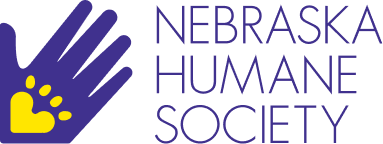Optimizing human resource (HR) workflows is vital for a smooth-running organization. However, navigating organizational structures and optimizing processes can be daunting. Clarity and efficiency in organizational structure are critical components of optimization. Visualizing the inner workings of an organization is complex, but with HR flow charts, this process becomes more manageable. HR flow charts allow leaders to visualize their organization’s processes and procedures, creating a roadmap for understanding interconnected dynamics and driving initiatives.
Organizational flow charts illustrate the sequential workflows involved in various HR functions. By mapping out these intricate processes, HR flow charts offer a clear understanding of an organization’s processes, allowing company leaders to make effective decisions, plan for the future, and develop organizational strategy.
Table of contents
Understanding HR Flow Charts
HR flowcharts are visual representations of the processes and connections within an HR department. These visuals are vital in HR management. They outline the sequences involved in HR workflows, including recruitment and onboarding, structuring roles and responsibilities, performance management, and more. HR organizational charts provide clarity and structure to ease the complexity of a human resource leader’s role, fostering more efficient decision-making.
Traditional organizational charts depict the hierarchical structures and reporting lines within an organization. These are essential for streamlining communication and adding transparency to the organization. HR flow charts differ in that they center on the intricacies of procedures, workflows, and organizational decision-making. These charts detail the specific steps involved in HR responsibilities in successive order, illustrating how each task progresses.
HR department flow charts are pivotal in visualizing departmental structures and relationships between staff, departments, and supervisors. As such, they complement org charts. When mapping out human resource workflows, a flow chart clearly delineates who is responsible for and who oversees each task, adding clarity to the interconnectedness of team members.

Benefits of HR Flow Charts
HR department charts offer many benefits for organizations of all sizes and industries. Some of the most significant benefits include:
Enhanced visibility—Flow charts offer enhanced visibility into many organizational tasks by transparently visualizing HR structures and workflows. This visibility allows HR personnel, managers, and executives to better understand how tasks flow, promoting better decision-making.
Improved understanding of departmental structure–Flow charts facilitate a deeper understanding of organizational structure by visualizing reporting relationships and responsibilities within each department.
Increased succession planning capabilities-With a clear visualization of available talent and career progression, HR flow charts allow for a more streamlined succession process. Identifying potential successors for various positions rather than relying on external candidates may lead to higher-quality results and increased retention. This also enables leaders to nurture staff development in the necessary skills before moving ahead, ensuring organizational stability.
Streamlined HR processes–Flow charts streamline HR processes by visually depicting each step clearly and concisely. Clarity minimizes ambiguity, ensuring everyone follows the same steps, reducing errors, and increasing efficiency. Better alignment with organizational goals–Aligning tasks with organizational objectives is critical for long-term success. HR flow charts help human resources ensure processes are well-aligned with the company’s short—and long-term goals.

Creating an Effective HR Flow Chart
HR flow charts are dynamic blueprints of an organization’s internal functions. However, an HR flow chart can only be effective if it is carefully designed to meet the organization’s individualized needs. The first step is to audit the current internal workflows to garner a deeper understanding of how each process is currently conducted and identify inefficiencies. From there, meticulously outline each step that should be taken to improve the efficiency and effectiveness of the workflow.
Consider the following additional recommendations for creating an HR flow chart.
Identify the key components and stakeholders
Consider which HR processes would benefit from a more streamlined approach with increased transparency, including:
- Recruitment and hiring
- Onboarding and training
- Employee performance management
- Career development
- Succession planning.
It’s also essential to identify the stakeholders in each process and include them in the relevant flow chart. Incorporate their feedback to ensure the chart is relevant and useful to those who will be using it.
Best practices for designing and formatting
How an HR chart is designed and formatted plays a vital role in whether it is utilized effectively. Adopting best practices for designing and formatting will ensure the flow of information is logical and the chart can be used with ease for enhanced efficiency.
Consider the following best practices when formatting your flow chart
- Utilize consistent symbols to represent different steps in the workflow (i.e., rectangles for a task or action, arrows to connect each step, diamonds to indicate a step to make a decision)
- Use distinct colors to show each section of the process
- Arrange steps in a logical sequence so tasks flow from the start to completion
- Keep text brief, simple, and straight to the point
Ensuring accuracy and relevance
Organizations must regularly update the HR flow chart to reflect changes in workflows. When charts aren’t updated as changes arise, you risk operating on outdated information and practices, which can affect many areas of your organization’s functioning. Staff may also begin using the charts less and “winging it,” reducing uniformity across the organization.
As you create and implement flow charts, establish plans for ensuring ongoing accuracy and relevance, including:
- Regularly auditing workflows
- Seeking feedback from staff and stakeholders
Evaluate the effectiveness of the flow chart on an ongoing basis and make changes as necessary to ensure they continue to serve the organization well, adding efficiency and improving productive decision-making.
Succession Planning with HR Flow Charts
Succession planning is one critical responsibility of an HR professional. Effective succession planning is necessary for ensuring the continuity and effectiveness of an organization’s key roles. HR flow charts help in this process, facilitating several aspects of planning.
Identifying potential successors
HR flow charts help organizations identify potential successors for various roles by visually representing talent pipelines. They can map out the progression of employees across multiple positions and levels in the organization. HR leaders can use this information to pinpoint individuals who obtain the skills, experience, and potential for higher-level roles.
Mapping career paths and development opportunities
Another way flowcharts help with succession planning is through career path mapping. HR managers can create career paths that outline the typical flow of roles within the company, from entry-level to supervisory roles. This can help facilitate discussions with employees on their career goals and aspirations. When employees understand the potential career paths, they may feel more empowered and motivated to grow within the company. This can also add transparency, ensuring staff know what is needed to move to the next position.
Aligning succession planning with organizational goals
Lastly, HR flow charts facilitate alignment between staff growth and organizational objectives. Identifying those staff who can grow into key positions helps the organization ensure continual progress toward achieving strategic objectives.

Harness the Power of HR Flow Charts
Navigating the complexities of modern HR management is challenging, as HR leaders have increasingly heavy workloads. HR flow charts are paramount to successful HR management and organizational strategy, offering enhanced efficiency across responsibilities. They provide a comprehensive visualization of the various HR workflows, from hiring to managing staff performance and succession planning, making for streamlined and effective decision-making. By embracing digital flow charts, organizations can optimize workflows, foster staff development, and increase success in key organizational goals.
Interested in learning more? Schedule a demo today!
What Our Customers Say About OrgChart






Carolina F.
Small Business
Verified User in Pharmaceuticals
Mid-Market (51-1000 emp.)
Jacqueline W.
Mid-Market (51-1000 emp.)
Jillian P.
Head of Talent Acquisition & Onboarding Mid-Market (51-1000 emp.)
Leo C.
Managing Director Mid-Market (51-1000 emp.)












